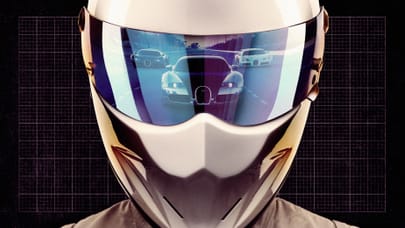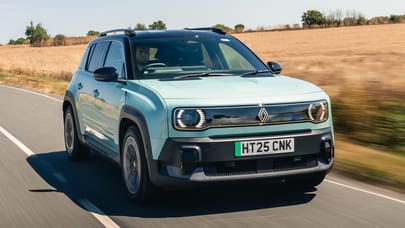
Top Gear’s Top 9: humblebrag sports cars
Here’s TG’s expert guide to finding a supercar without being a badge snob…

Honda NSX

The first NSX made do with a V6, good at first for 275bhp, later upped to 324bhp. Was it a true supercar? The debate will probably never be settled. It was low, mid-engined and revvy (yep, it’s a supercar), but also easy to drive and see out of, practical, and more ‘quick’ than ‘oh-my-word-it-wants-to-kill-me’ (not very supercar-y).
Supercar, sports car, whatever. The NSX remains one of the seminal fast cars of the 1990s, an all-time Japanese great, an inspiration for legends like the Ferrari F355 and McLaren F1, and it spawned the latest turbocharged, hybrid-boosted NSX which is most definitely A Supercar.
And it did all that – outside of America, at least – wearing the same badge as a Jazz. Or a lawnmower.
Advertisement - Page continues belowFord GT

An actual supercar with the Blue Oval badge? Ford’s pulled it off twice: first with the 2005 V8 GT – a homage to the 1960s Le Mans-conquering racer – and then again with the EcoBoost V6 GT as recently as 2016.
This was in fact a road-sanitised racing car with the sort of advanced aerodynamics that the Americans usually keep locked up in Area 51, applied to a car wearing the same badge as a Fiesta. Nice.
Renault Sport Spider

Renault has one of the proudest histories in hot hatch-ery of any carmaker, but it has dabbled with rear-wheel drive playthings as well. The first ever car to wear the Renault Sport moniker was this lightweight two-seat roadster that – like many of Renault’s rapid superminis – was to support its own one-make race series.
Sadly for the Spider, France’s aluminium road-going kart arrived on the scene at precisely the same moment as Britain’s equivalent – the Lotus Elise – landed, and promptly stole the Renault’s thunder. But that didn’t stop Renault having a crack at something ‘exotic’…
Advertisement - Page continues belowRenault Clio V6

When is a fast Clio not a hot hatch? When the Clio in question fills its back seats with a 2.9-litre V6, driving the rear wheels, and grows so cartoonishly wide it’d probably get wedged if you tried to drive it under the Eifel Tower. The Clio V6 is 171mm phatter than a standard Clio, in fact.
Developed first by Tow Walkinshaw Racing and later in-house at Renault Sport, the infamously tricky-to-drive and slightly porky Clio V6 wasn’t dramatically faster than a standard Renault Sport Clio.
But somehow, the silly cost or the extra weight doesn’t really matter. This is one of the all-time classic examples of French motoring madness. Think Pagani is wacky? They’ve never put their V12 in the back of a Fiat Punto, have they?
Chevrolet Corvette

America’s sports car has now morphed into its own sub-brand, but at heart, it owes its existence to Chevy, which means it shares website real estate with an interminable greeny-brown mulch of tedious SUVs. It’s like finding out Walmart bottles its own twenty-year aged scotch.
Who knows, maybe they do. We’re writing this from England. What’s Walmart?
Dodge Viper

Still one of the all-time great car names. And still one of the all-time scariest sports cars, thanks to V10s over eight litres in capacity and an allergy to traction control in the earlier versions.
To Europeans, Dodge is pretty much forbidden fruit (following an ill-fated campaign to sells us the likes of the Caliber and Avenger in the mid-2000s) but in its homeland, Dodge is hardly the Lamborarri of badges.
Vauxhall VX220

It’s a Lotus Elise, from the people who brought you the Zafira. And the Vectra. Only, it’s an Elise with more power, and arguably, a prettier body. Talk about best of British…
Advertisement - Page continues belowNissan GT-R

The R35 Godzilla is a giant-killing legend of 21st Century sports cars, a mini-Veyron that took the fight to the Porsche 911 Turbo. Its torque-shuffling all-wheel drive, dual-clutch gearbox, brutal launch control and hugely tuneable bi-turbo V6 have rightly made it a modern hero of drag races, lap times and any-weather road-conquering urgency.
It still even looks the part, a decade and a half on from its launch.
Not bad for a vehicle which is, when all said and done, a Nissan. How on Earth will they go about replacing it?
Volkswagen W12 Nardo

Okay, we’re cheating a bit here, because the VW W12 never actually went into production. But it’s still interesting, because it shows just how wild VW could be when the late Ferdinand Piech was still the company puppetmaster.
In the late Nineties, VW had really fallen for ‘W’ configuration engines. They allowed hugely powerful multi-cylindered designs to be packaged in conventional AWD chassis – and went on to serve in the Phaeton limo, various Bentleys, and (once they got round to giving one 16 cylinders, four turbos, and putting it behind the driver,) the iconic Bugatti Veyron.
But before all that, Volkswagen showed off its intentions by mounting a 5.6-litre, 414bhp W12 in a bright yellow mid-engined supercar… wearing the same badge as a VW Polo. This was later upped to over 600bhp in the 221mph W12 Nardo, named after the high speed test track where it set a 200mph endurance record in 2002.
And there you were thinking VW’s fastest car was the Golf R...
Advertisement - Page continues below
Trending this week
- Car Review
BMW iX3







